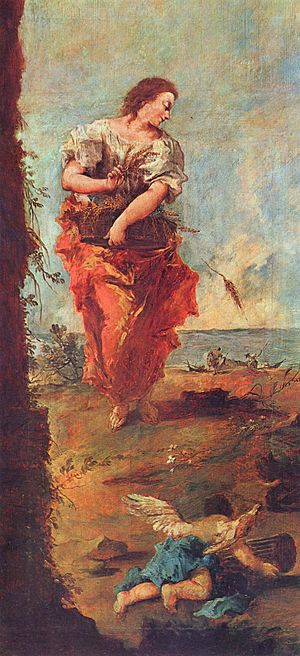Hope facts for kids

Hope is a feeling of wanting something good to happen. It's about believing that positive things will occur in your life. When you hope, you expect good outcomes for events and situations.
For example, you might hope for a sunny day for a picnic. Or you might hope to do well on a test. It means you wish for something and believe it can happen. The opposite feelings of hope include sadness, feeling helpless, or being in despair.
Understanding Hope: Snyder's Theory
A psychologist named Charles R. Snyder studied hope. He was an expert in positive psychology, which looks at what makes people happy and strong. Snyder wanted to understand how hope affects different parts of our lives. This includes our health, school, work, and even our sense of purpose.
Snyder believed that hopeful thinking has three main parts:
- Goals: This means having clear aims or things you want to achieve in life. For example, your goal might be to get good grades.
- Pathways: These are the different plans or steps you can take to reach your goals. If your goal is good grades, a pathway might be studying every day.
- Agency: This is your belief that you can actually make things happen. It's the feeling that you have the power to follow your pathways and achieve your goals.
So, according to Snyder, hope is about seeing ways to reach your goals. It's also about believing in yourself to use those ways. It's like having a map (pathways) and the energy to follow it (agency) to get to your treasure (goals).
Images for kids
-
Hope, an allegorical painting by George Frederic Watts, 1886.
-
An engraving of Pandora trying to close the box she opened. The evils of the world escape.
See also
 In Spanish: Esperanza para niños
In Spanish: Esperanza para niños






